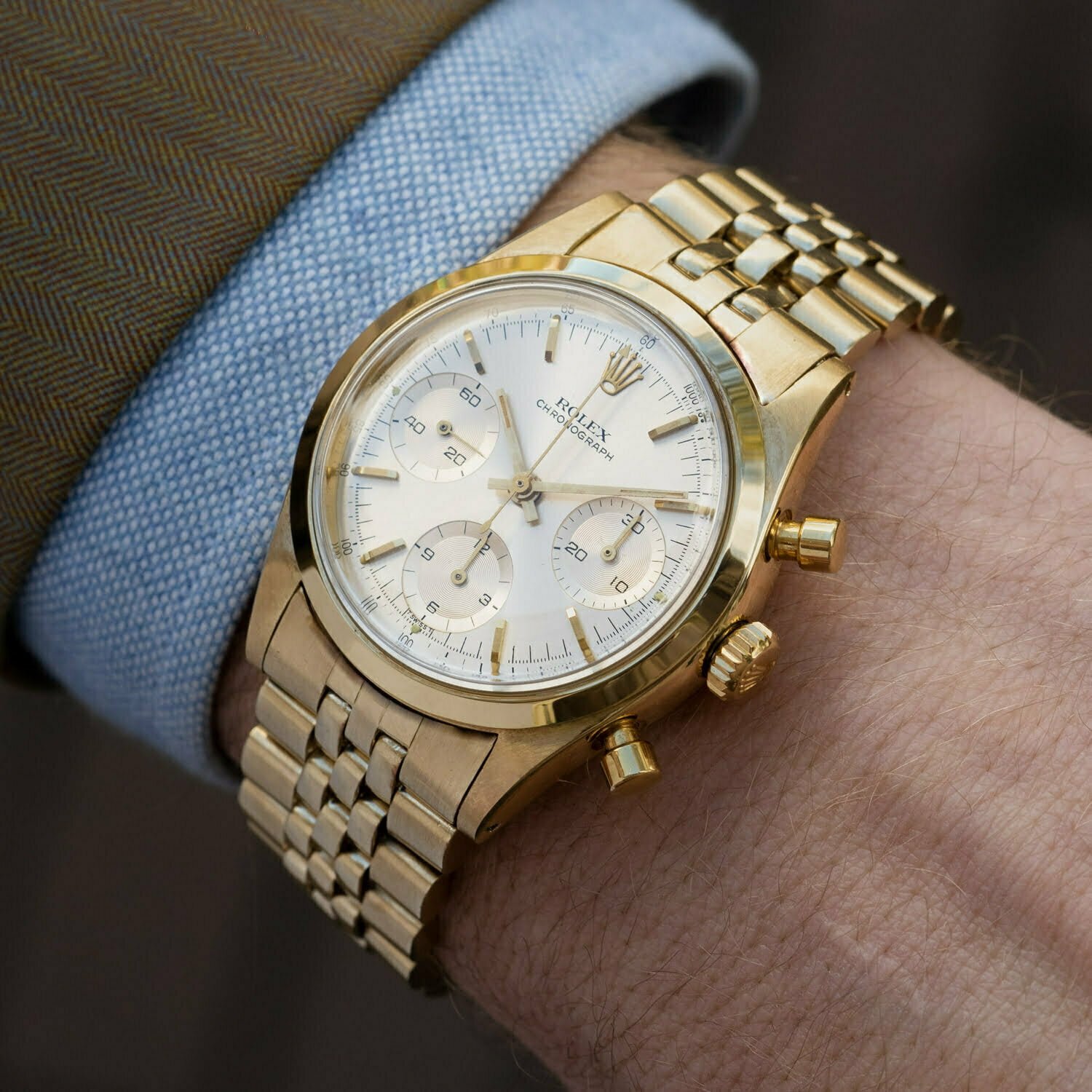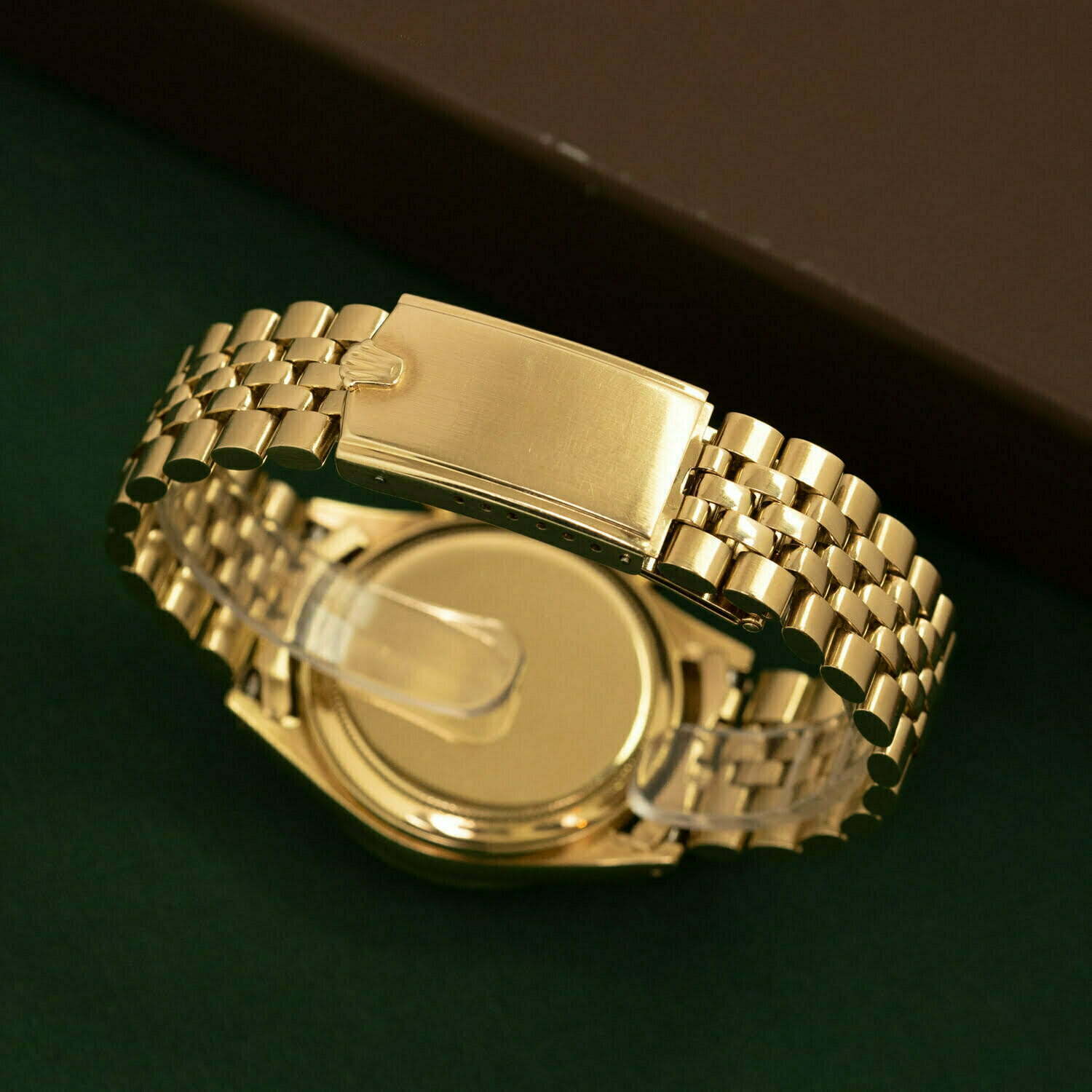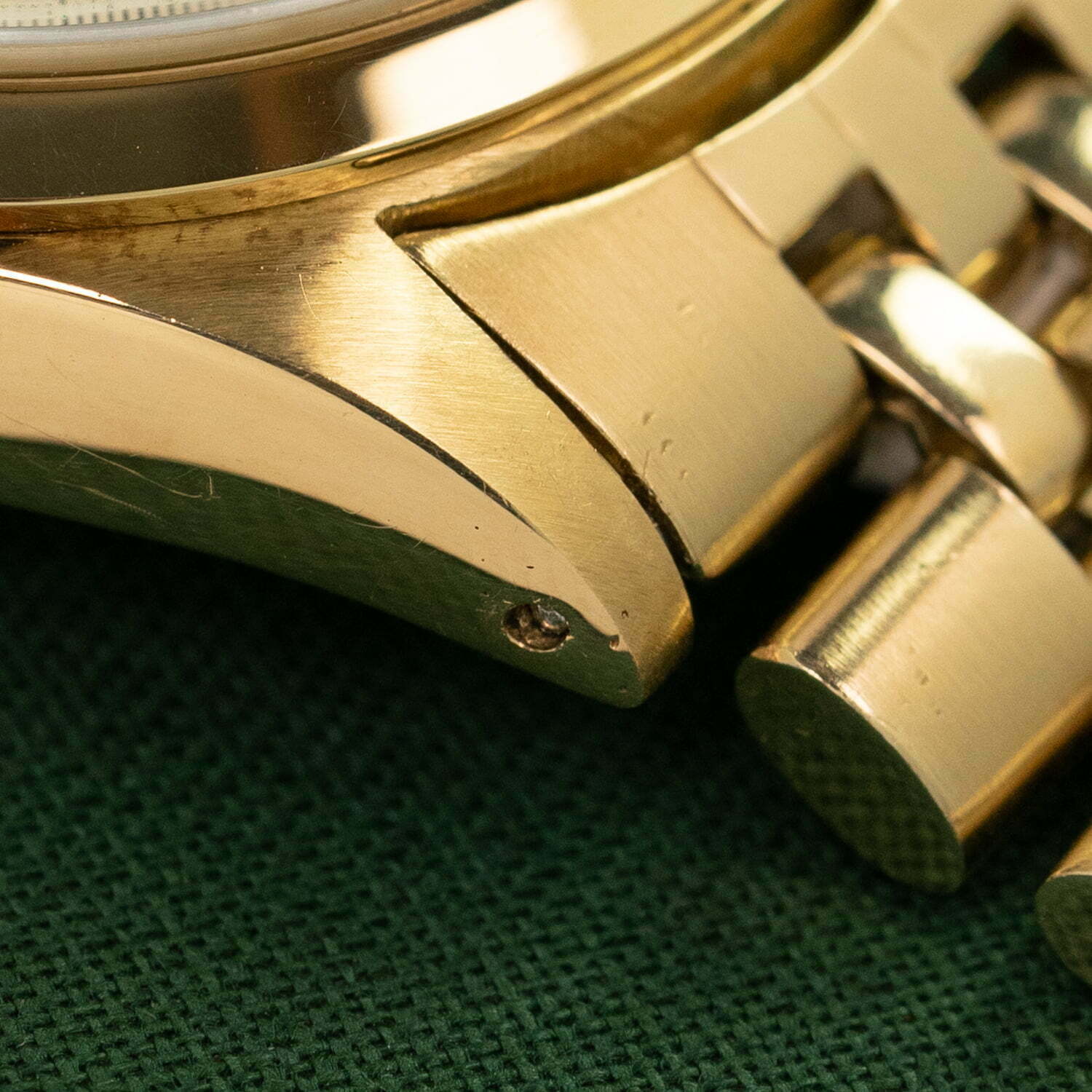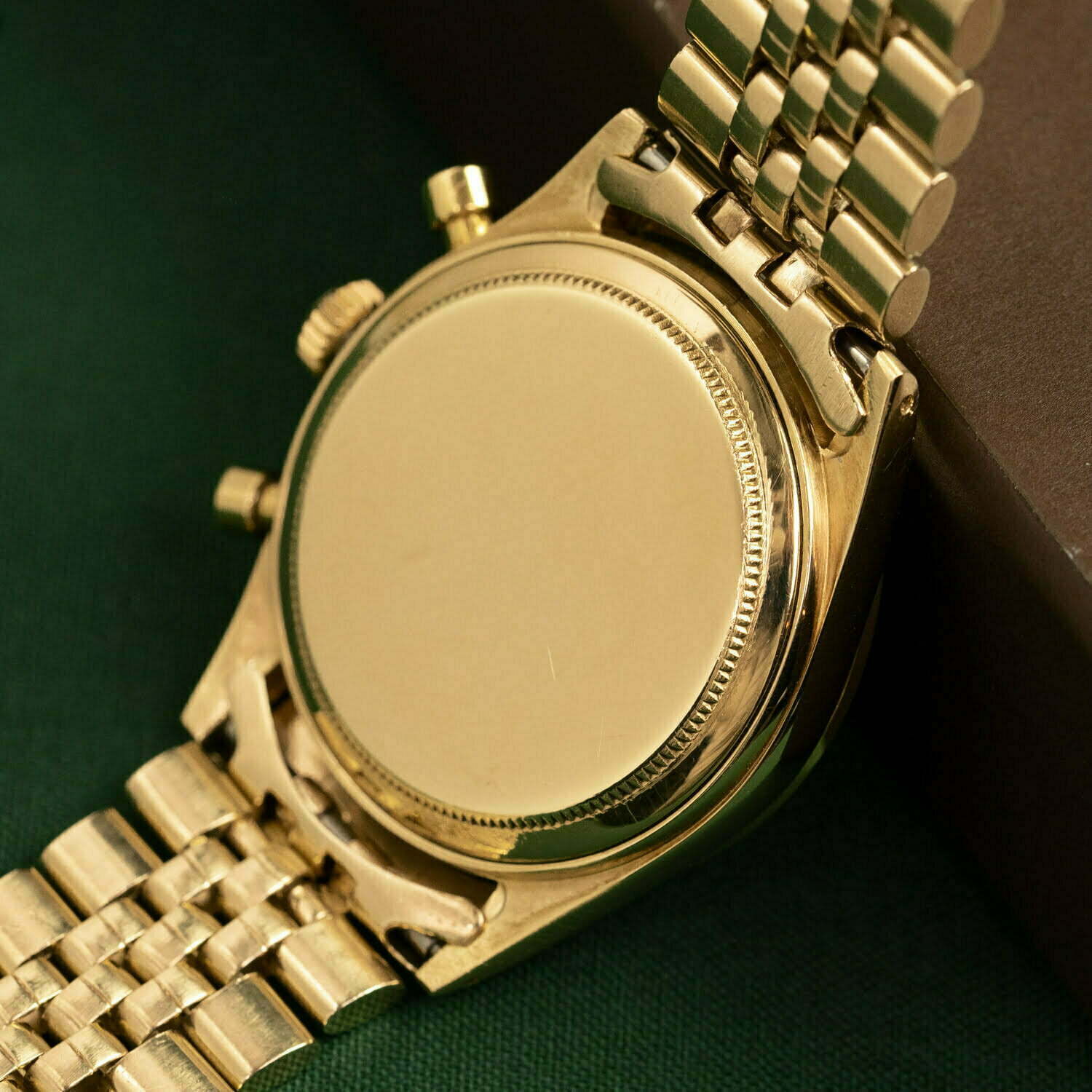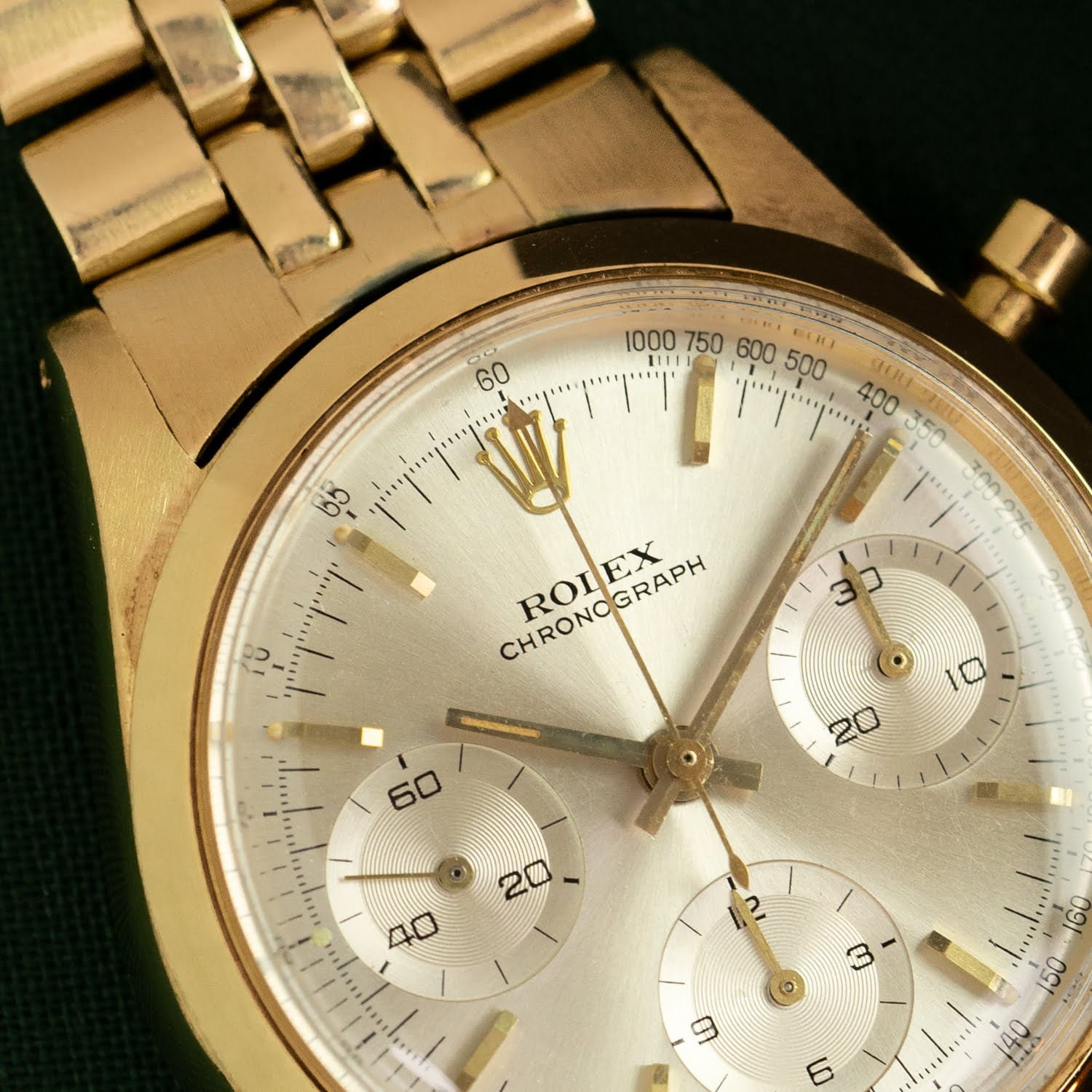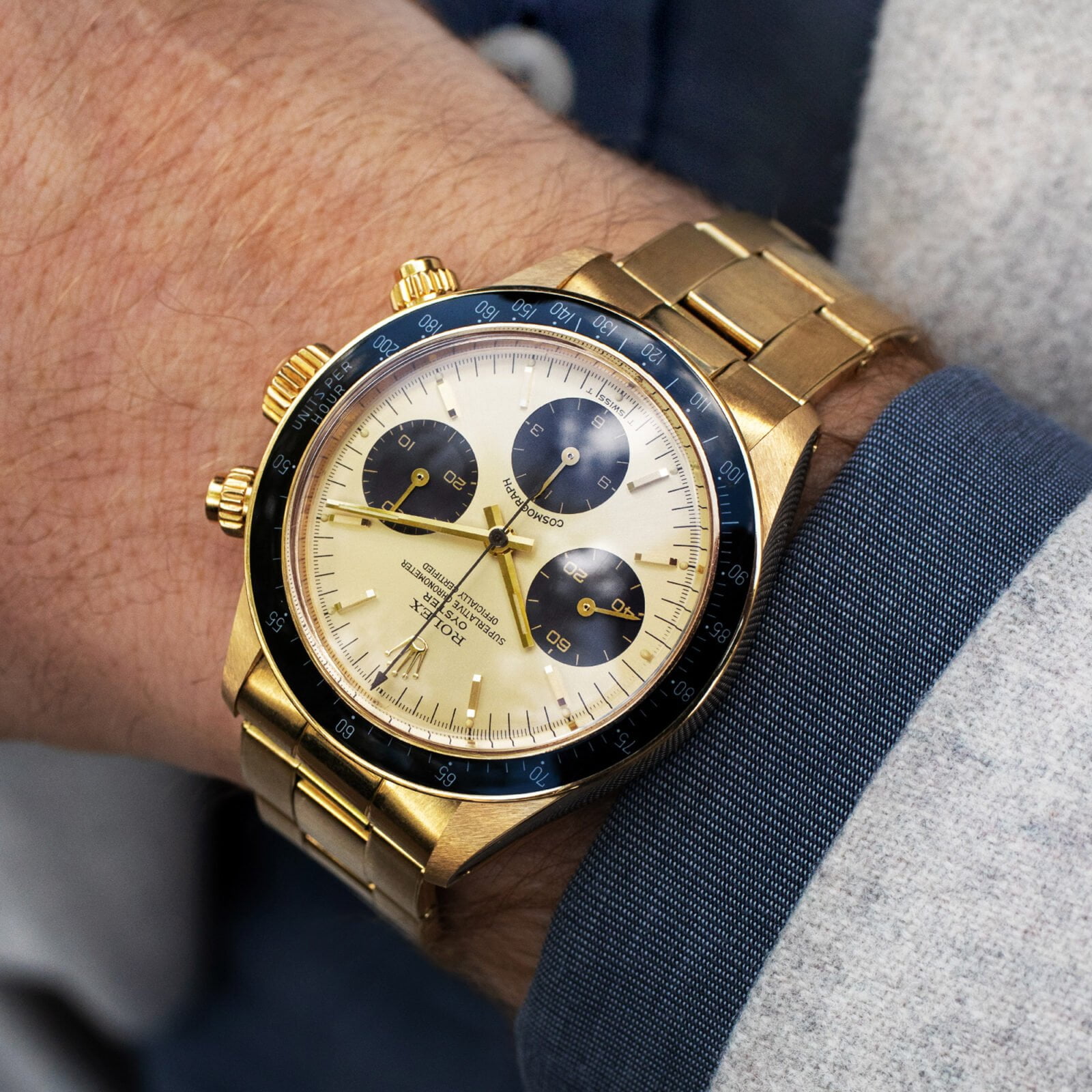

14k yellow gold jubilee 'coffee bean' bracelet original Rolex USA
6238
Less than 250 6238's -in 14K gold- were produced, how many are still this well-preserved?
It doesn't necessarily sound that rare but these numbers, for a standard production model that was produced over the course of 7 years, are extremely low. During this period Rolex released close to 2 million other units. Even though the reference is rather scarce, it did play an important role at a pivotal time for Rolex. As it was kind of the predecessor of the coveted Daytona-line it is dubbed as the "pre-Daytona".
Yet, the production of the 6238 did not cease when Rolex moved the tachymeter scale to the bezel and introduced the first Daytona in 1963. This specific example we acquired is produced in the mid 60's, so alongside the 6239. It is executed in yellow gold, which is over 10 times rarer than a steel 6238, and more specifically in a 14K alloy. This alloy was used for the American market and that this piece was indeed delivered to the USA is furthermore confirmed by the import stamp on the Valjoux 72B movement, where it reads "ROW" on the bridge. Remember, Rolex wanted these chronographs to play an important role in the States, hence they named it after the racetrack in Florida instead of the initial idea of the " Le Mans".
The dial only reads "Rolex Chronograph" and that isn't the only sober design-feature of this minimalistic tool watch. Unlike the later Daytona, on the 6238 the sub-dials do not have contrasting colours but rather blend in with the rest of the dial, although being slightly recessed. The tachymeter scale is subtly applied to the outside of the dial. Whilst the earlier 6238's (and it's predecessors) oftentimes used multiple colours and had a more complex and crowded lay-out.
The classic baton-markers have luminous plots at the end, the use of the tritium is indicated at the 6 o'clock position. Apart from the brand and model name, "T Swiss T" is the only text on the dial. The hands are also supplied with tritium and on both it turned into a warming cream color. The sub-dial hands are oftentimes replaced, but we are happy to present ours with the original set.
The case displays very minimal signs of wear and this is emphasised by the thick lugs, spotless bezel and original crown and pushers. The serial is clearly readable and between the lugs one can also find a "14k" stamp. The caseback is unmolested and free of toolmarks, matching the condition of what is underneath; a pristine 72B caliber.
The period-correct bracelet too is in 14K yellow gold and features the characteristic "Coffee-Bean Jubilee" links. Although the production quality of these USA made bracelet are considerably lower, they are beloved and sought-after among collectors.
